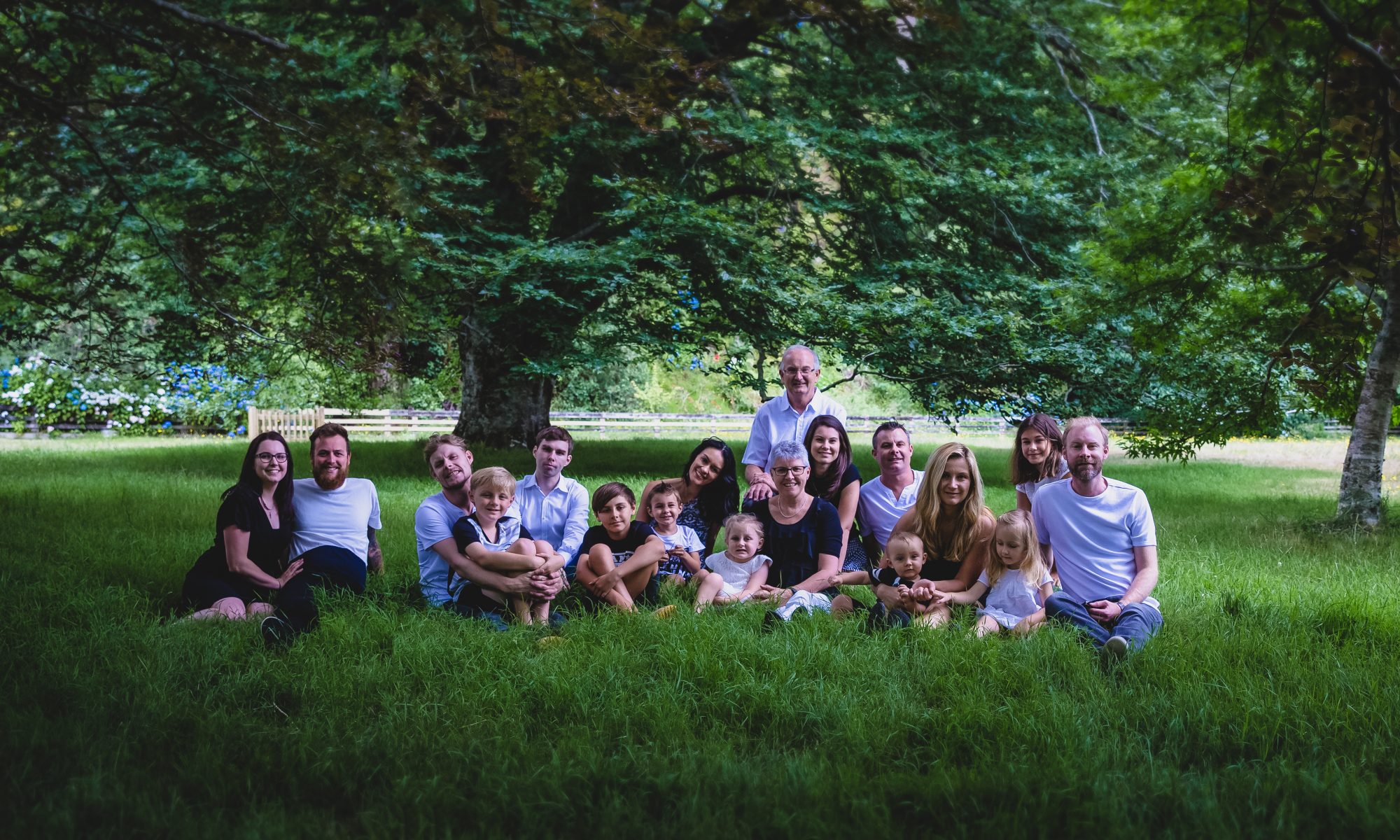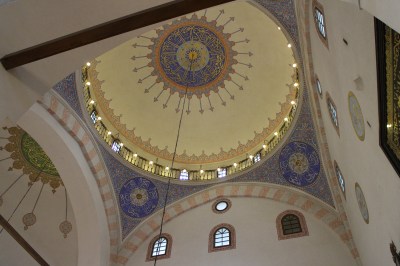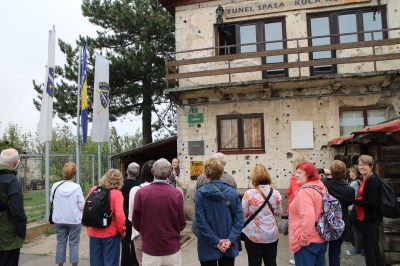Okay… so here is a map to show you where we now, well for this blog post anyway. We started at Budapest, traveled down to Belgrade, then onto Sarajevo and now we arrive at Mostar.
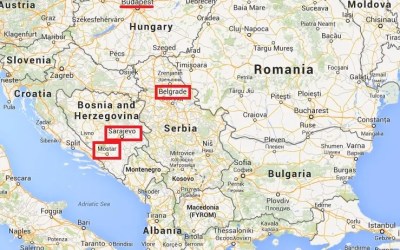
Our final destination for the day was to be Dubrovnik. We had already stopped at Jablanica, and for lunch we were to have a very special treat. Not only great food but a fantastic place to eat as well.
Facebook has a page called ‘Places to see before you die’ and I often see pictures of places and things that I think would be just amazing to visit and see with my own eyes. About six months earlier I saw a photo of a very high bridge and the surrounding town looked very old. I tagged Judy (my sister) on the photo and wrote “I wonder if we will get to see this place?” Well… Mostar was that place, and yes! This was our lunch destination. I was so excited and very happy. When you see the photos you will understand why!
The beautiful white stone bridge had stood since the Ottoman Turks had built it in 1566. In November, 1993, it was blown up during the Bosnian war, but as it was a World Heritage site, it was fully restored and finished in 2004.

At the top of the arch of the bridge two handsome and tanned men stood collecting money from tourists in the dare that if they got a sufficient amount, they would jump. The Neretva river is such that the deepest and safest place to jump was a very small area. So the excitement that the men would build before they jumped the 70 feet into the water, was part of their act and of entertaining the tourists. I think they hoped we would all pay more for another jump!







The little town itself was spectacular enough. It would still be worth the visit even without the bridge jump! A narrow stone road led to the bridge which has the largest stone arch span of 28 metres. Along each side of the road were little shops selling colourful silks, weaved fabric, copper articles, souvenirs and lace.
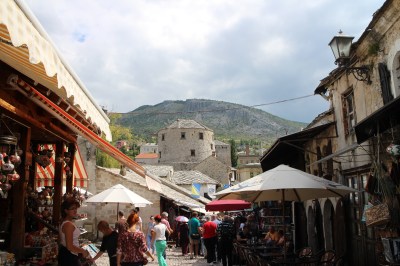



We had so many restaurants to chose from but decided on one that overlooked the river. Eating our lunch while looking at the bridge and the amazing view the area offered was definitely a ‘pinch me’ moment. I couldn’t believe we were lucky enough to be at that very spot!




On a serious note though, the young girl who showed us our seats at our restaurant has lived in Mostar all her life, she was 17. I said to her that she must be delighted to live in such a pretty town. Her response was that there was no work available, only the tourist trade and she didn’t get full time work at that. She also said that it was very seasonal work and for much of the year they had no income. And she couldn’t get an opportunity to advance herself without money or education. Tugged at my heart strings I can tell you! The town also still bears the wounds from the Bosnia war and many buildings still needed repair.


I loved Mostar! I hope that you can get an idea of how amazing it is by the photos. If you click on the photo you will get a larger view. They take awhile to upload as they are very good quality, but worth it for a better picture.
Enjoy looking and feel free to leave a comment 🙂
